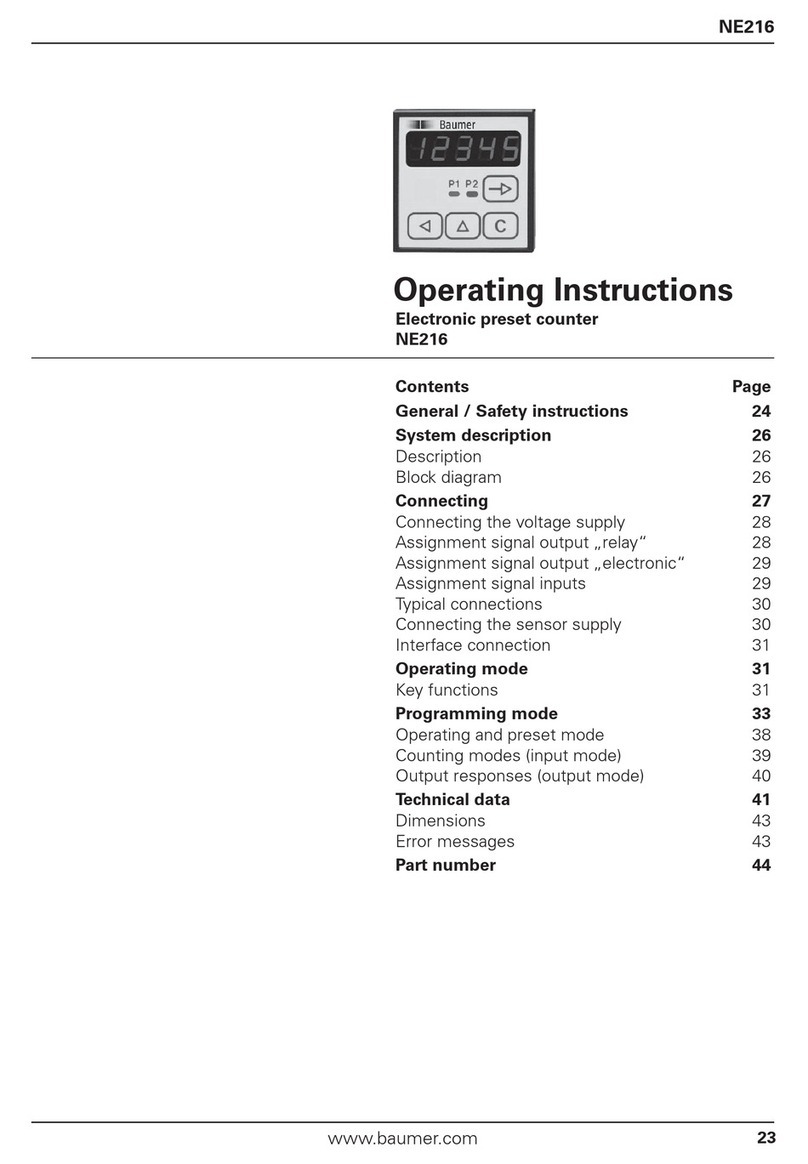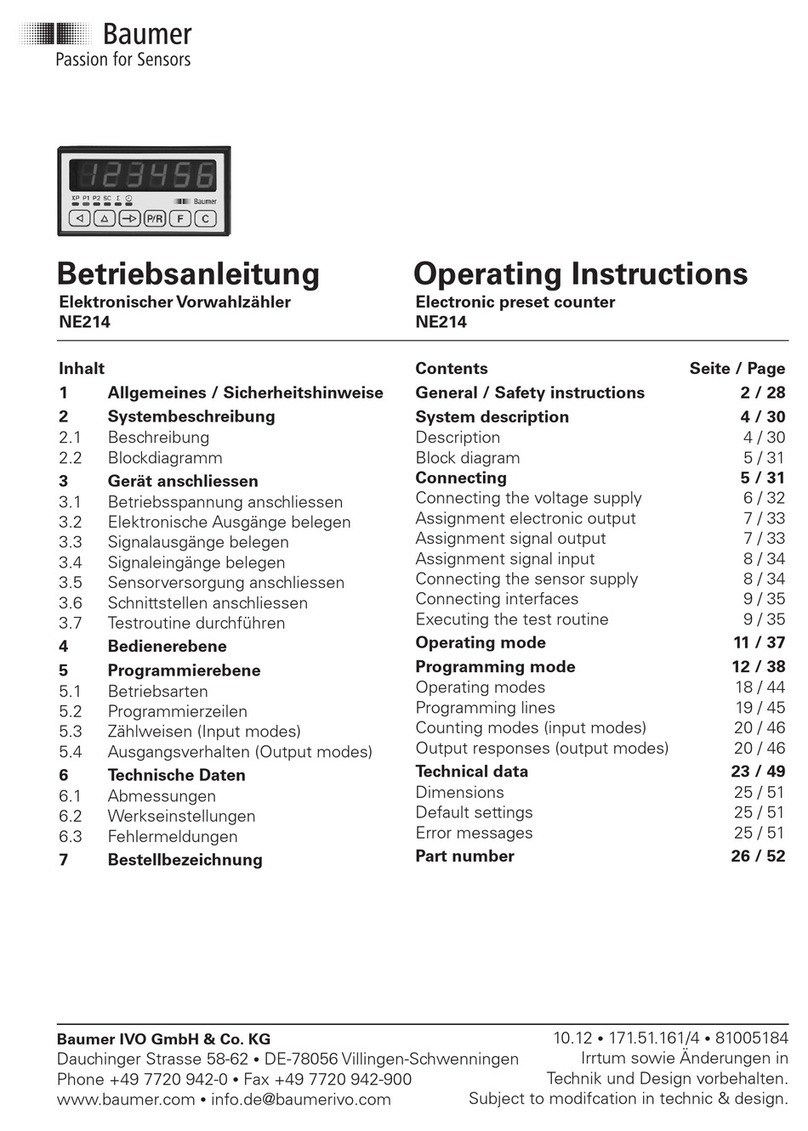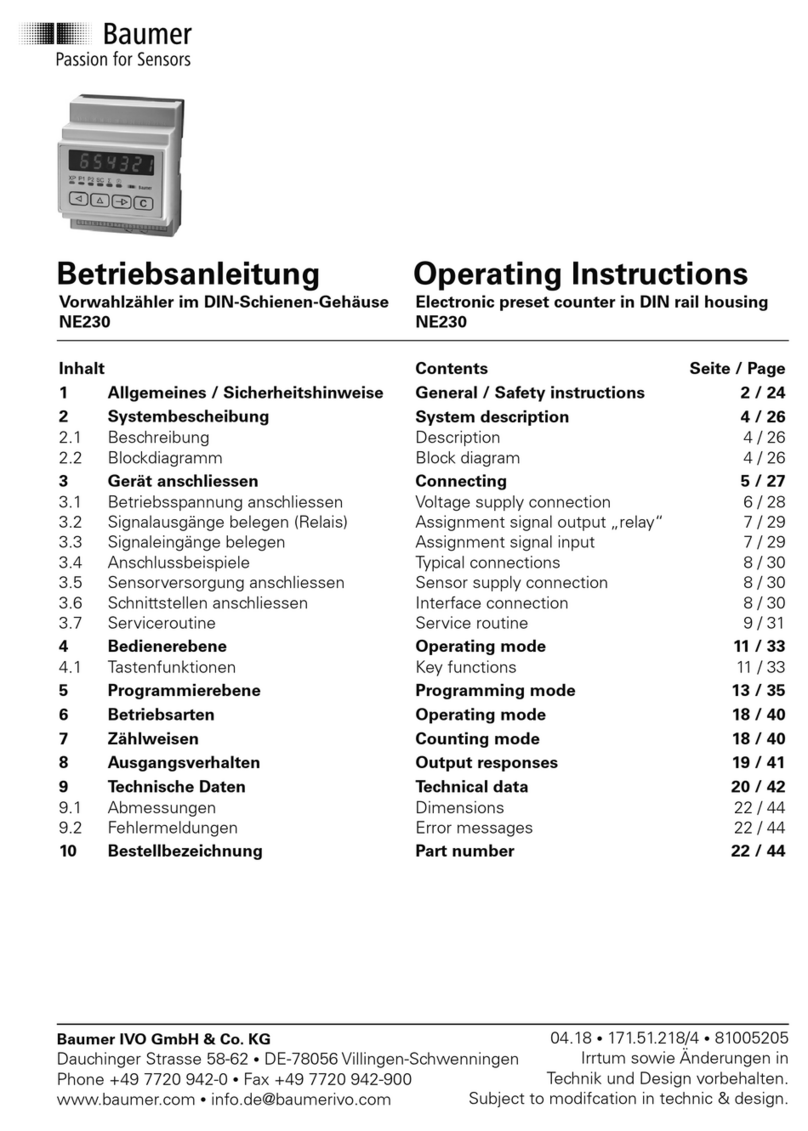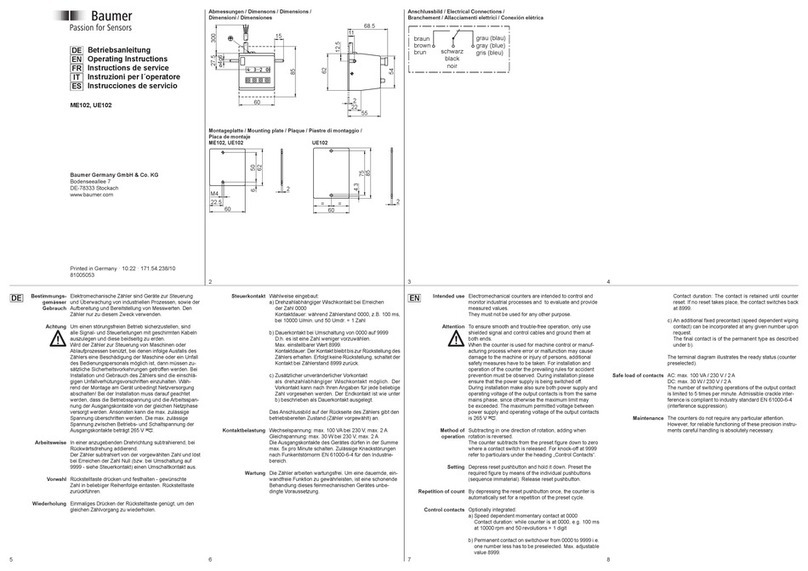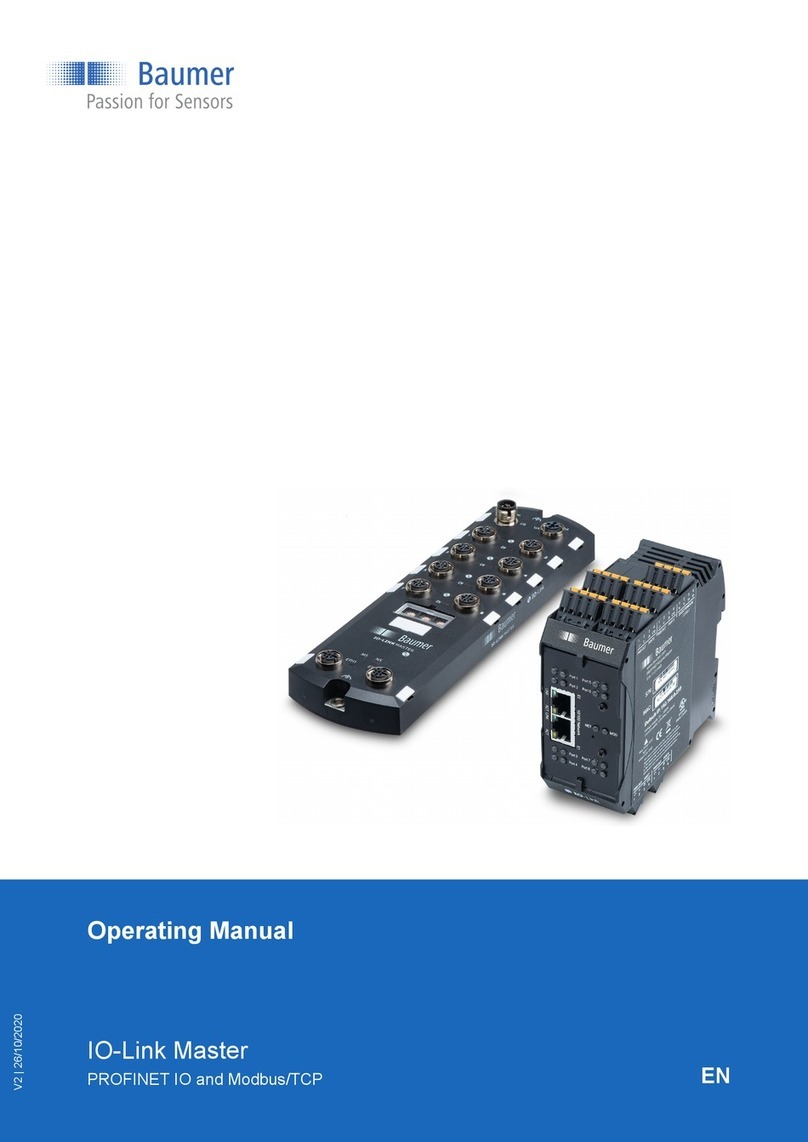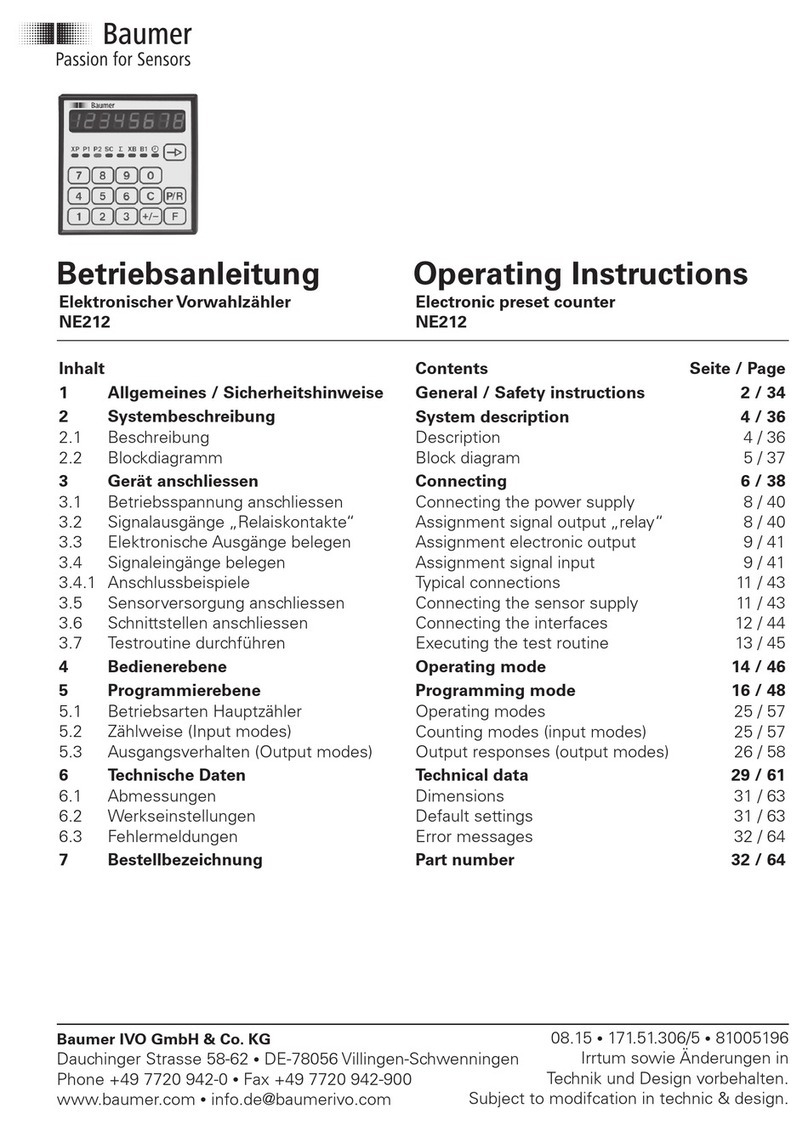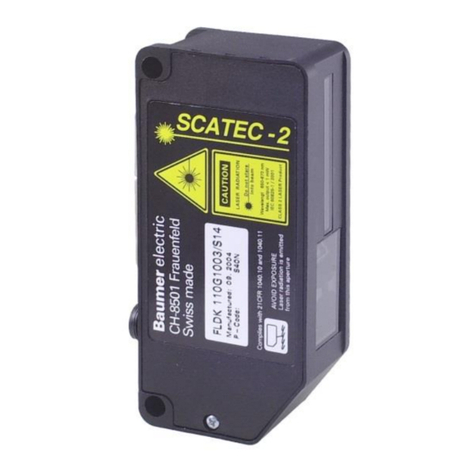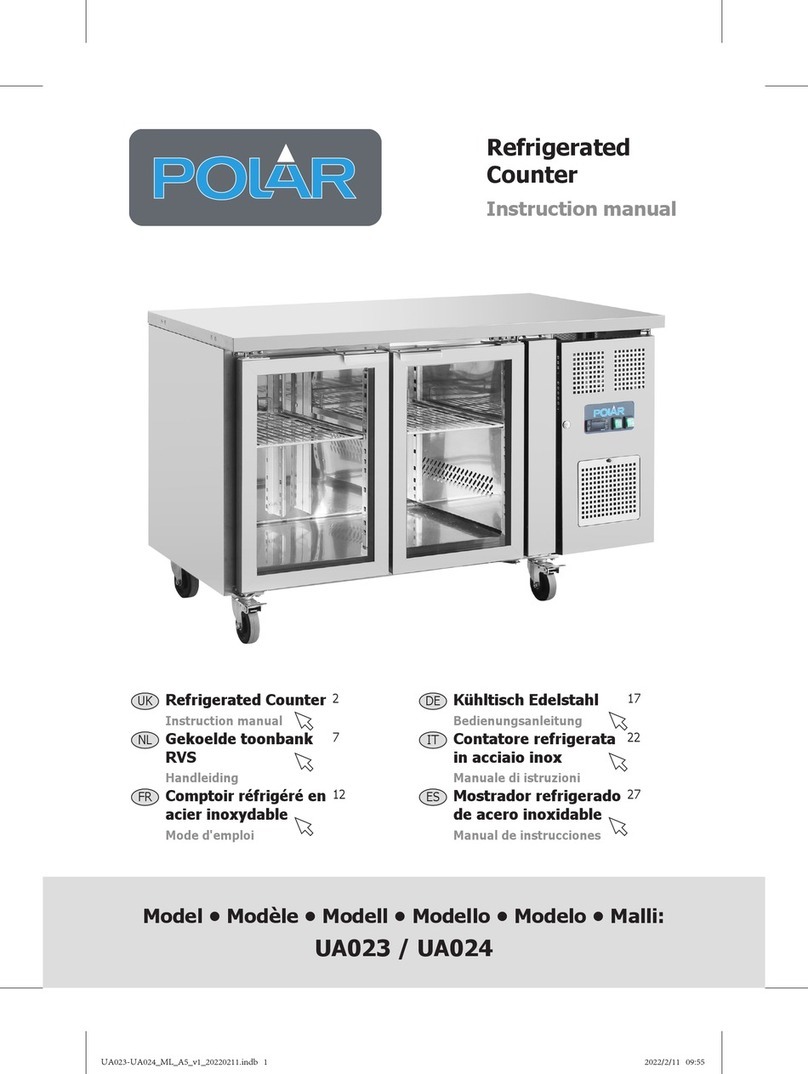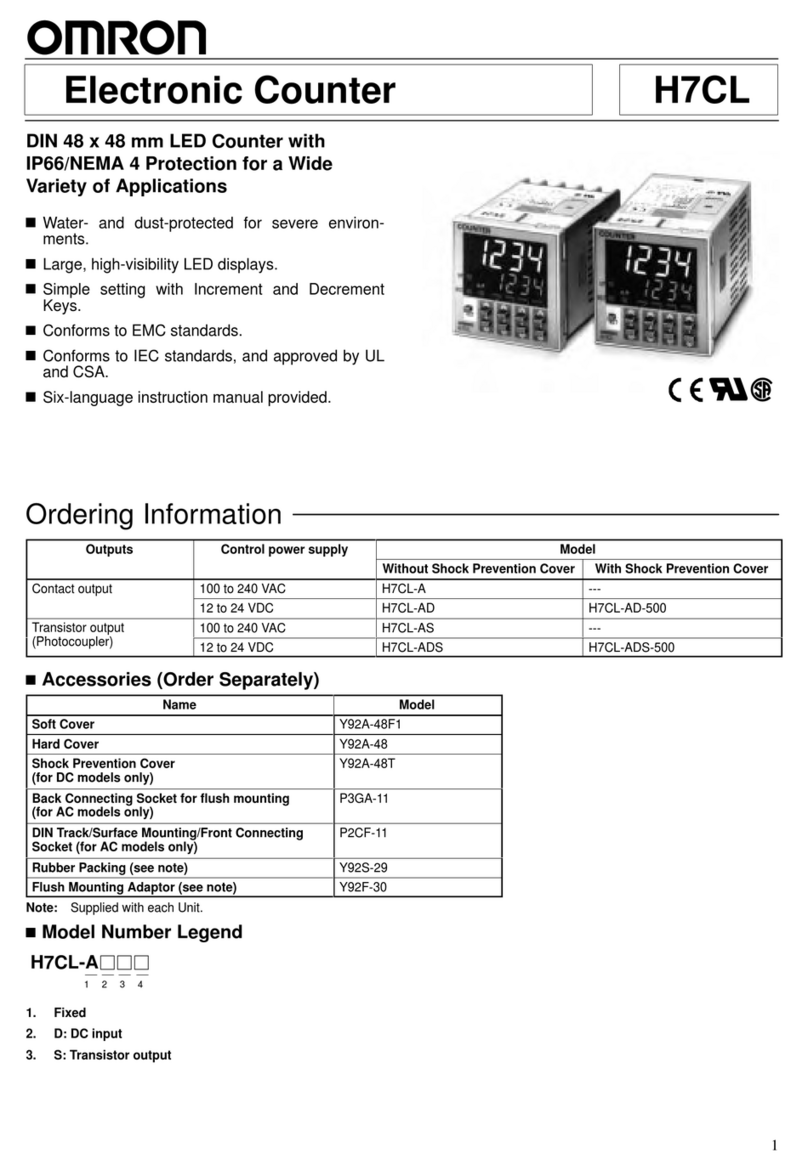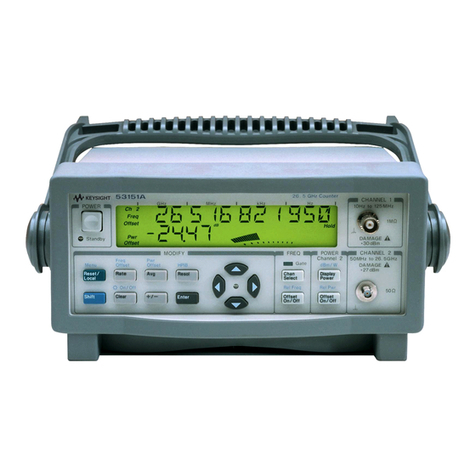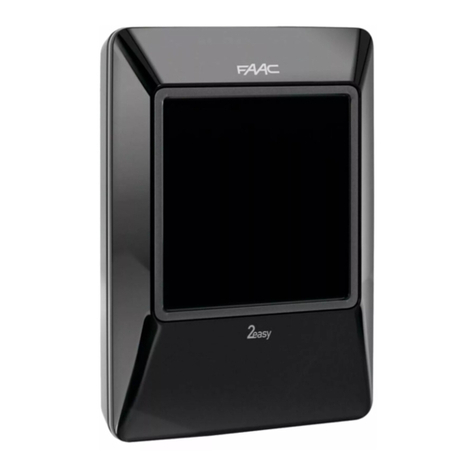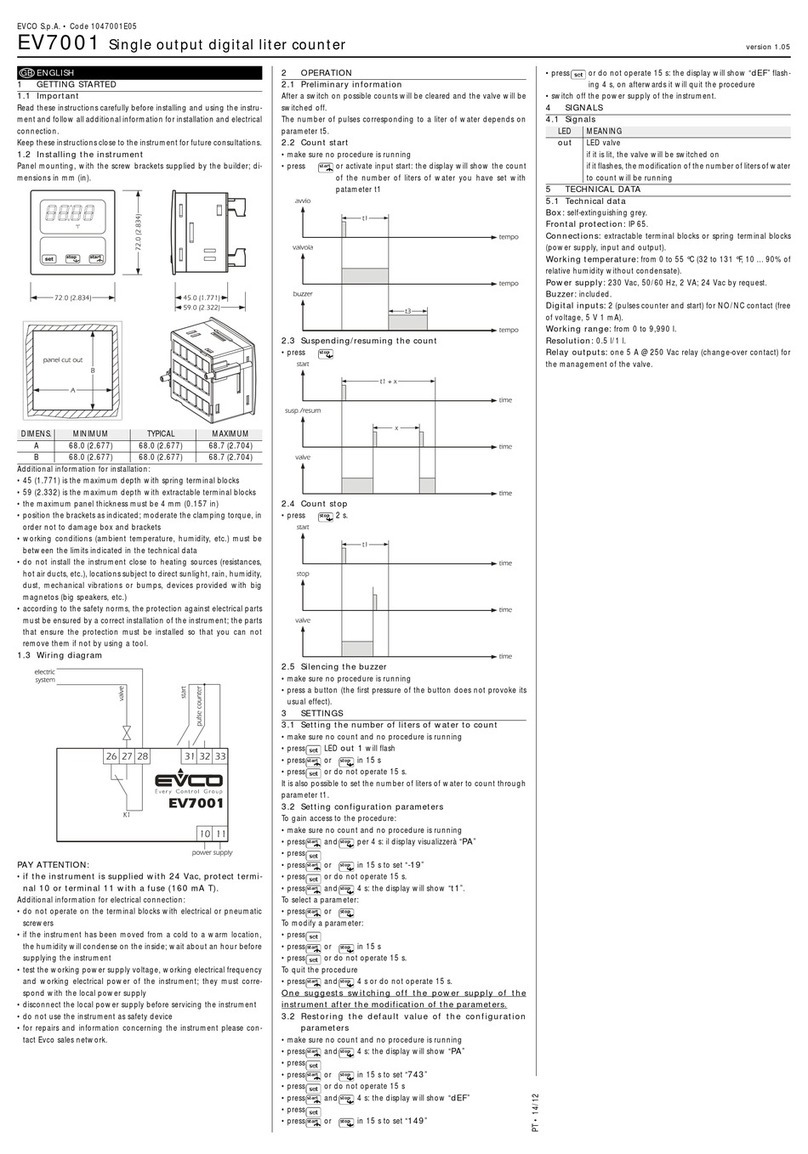
english
www.baumer.com 7
ISI30, ISI31, ISI32, ISI33
Operating instructions
LCD Display counters
isiLine 30/31/32/33
Description
The isiLine display counters are battery-powered. They are con-
trolled by contact or voltage pulses. They may be used in various
applications, like e. g. totalising, parts counting, position
acquisition, differential counting, etc. In addition, the various
models with specific input types may be extended using control
inputs to select operatin modes and set for almost any applica-
tion thanks to adjustable operating modes.
1.1 reface
Please read this instruction manual carefully before
installation and start-up. Please observe all warn-
ings and advices, both for your own safety and for
general plant safety. If the device is not used in
accordance with this instruction manual, then the
intended protection can be impaired.
1.2 Safety Instructions and Warnings
Please use the device only if its technical condition
is perfect. It should be used only for its intended
purpose. Please bear in mind safety aspects and
potential dangers and adhere to the operating
instructions at all times. The safety standards in
force for electrical installations are also to be
adhered to.
1.3 Use according to the intended purpose
The application area for this device lies in industrial processes
and controls, in the fields of manufacturing lines for the metal,
wood, plastics, paper, glass, textile and other like industries with
a degree of contamination of 2. Over voltages at the terminals
of the device must be kept within the limits of Over voltage
Category II. The device is not suitable for use in hazardous areas
and for areas excluded from EN 61010 Part 1. The device may
only be operated indoors as a panel-mounted device. However,
in certain conditions, an outdoor operation is also allowed. It
may be operated up to an altitude of 2,000 m. Use for any pur-
pose over and beyond this will be deemed as not in accordance
with its intended purpose.
If the device is used to monitor machines or processes in which,
in the event of a failure of the device or an error made by the
operator, there might be the risk of damaging the machine or
causing an accident to the operators, then it is your responsibili-
ty to take the appropriate safety measures.
1.4 Mounting in a control panel
Mount the device away from heat sources and avoid
direct contact with corrosive liquids, hot steam or
similar. When mounting the device, make sure it is
sufficiently cooled.
1.5 Mounting instructions
– Remove the mounting clip from the device.
– Insert the device from the front into the panel cut-out, ensur-
ing the front-panel gasket is correctly seated.
– Slide the fixing clip from the rear onto the housing, until the
spring clamps are under tension and the upper and lower
latching lugs have snapped into place.
1.6 Electrical installation
This device is powered by an internal battery
– In order to respect the fire protection regulations,
8 A/150 VA shall not be exceeded on the counter
in case of a defect!
– Do not wire the terminals of the device that are
not used.
– The pin assignment of the connectors, as well as
the maximum admissible values, must obligatorily
be observed.
– An EMC-compliant installation is a prerequisite to
reach EC conformity.
1.7 Advice on noise immunity
All connections are protected against external sources of inter-
ference. The installation location should be chosen so that induc-
tive or capacitive interference does not affect the device or its
connecting lines! Interference (e.g. from switch-mode power
supplies, motors, clocked controllers or contactors) can be
reduced by means of appropriate cable routing and wiring.
1.8 Measures to be taken:
– Use only shielded cable for signal and control lines.
– Connect cable shield at both ends.
– The conductor cross-section of the cables should be a mini-
mum of 0.14 mm².
– The shield connection to the equipotential bonding should be
as short as possible and with a contact area as large as possi-
ble (low-impedance).
– Only connect the shields to the control panel, if the latter is
also earthed.
– In case of problems due to ground loops, the shield is to be
connected to the reference ground, on the reception side, with
low impedance and, on the emission side, via a capacitor of
approximately 100n .
– Install the device as far away as possible from noise-contain-
ing cables.
– Avoid routing signal or control cables parallel to power lines.
– Cables and their insulation should be in accordance with the
intended temperature, voltage and power ranges. The stan-
dards of the respective countries apply.
DC versions:
Use shielded wires for the counting and control inputs so as to
obtain the maximum EMC resistance or connect not used count
inputs to ground (0 V).
AC versions:
Use shielded wires for the counting and control inputs so as to
obtain the maximum EMC resistance.
